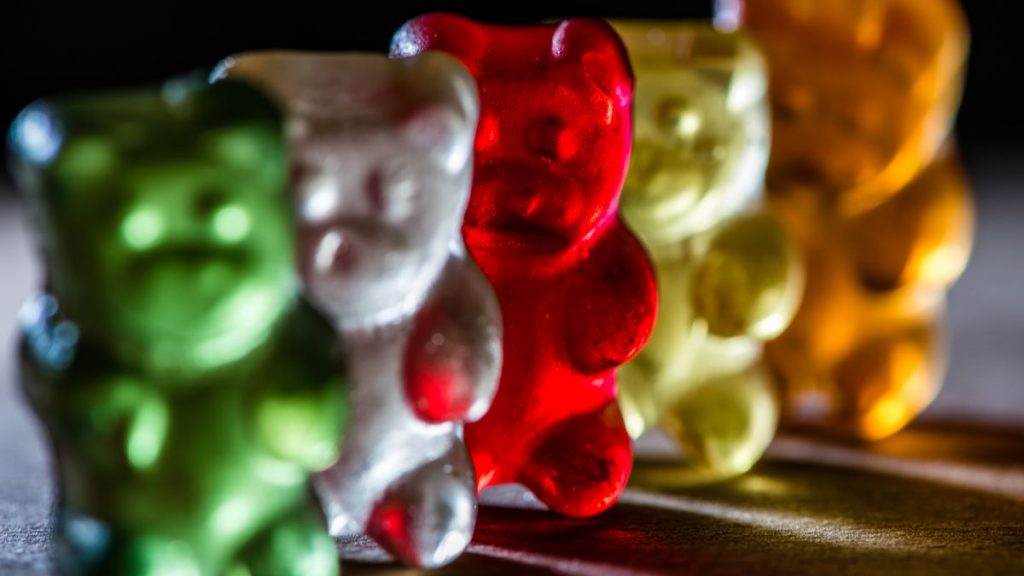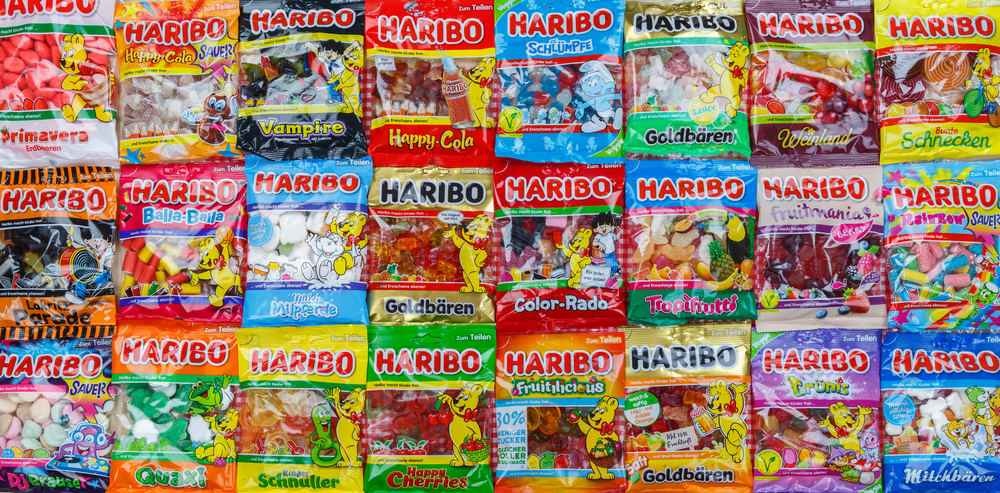The Haribo brand celebrates this year the centenary of the creation of its little gummy bears. Haribo is a German brand that was founded in 1920 by Hans Riegel. The name of the company comes from the name of its founder himself as well as the name of his city of origin: Hans Riegel Bonn. The company’s first flagship product was the “golden bear”. It is a candy in the shape of a teddy bear made from gelatin and dyes. Haribo is one of the most popular companies in the sale of jelly confectionery throughout Europe.
It produces around 350,000 tons of sweets each year. Its turnover is estimated between 2 and 3 billion euros per year. In Germany alone, Haribo holds 58% of the confectionery market share. Apart from its own sweets, the company also sells those of the Maoam, Zan, BärenSchmidt and Dulcia brands. Just like society, these little cubs also have their little story.
The beginnings of Haribo
Haribo’s founder started making sweets in his kitchen. For this, he used a simple copper pot as well as a rolling pin to create shapes and a stove to heat the sugar. A year later, Riegel married Gertrud who also became his first partner. So his wife delivered the treats while he was in the kitchen creating new products. Before finding success with gummy bears, Riegel designed hard candies.
The teddy bear prototype
In 1922, the first bear that Riegel launched was the dancing bear or Tanzbären. These dancing bear cubs were taller and thinner compared to the bear cubs of our time. Indeed, to give them shape, Riegel was inspired by the animation of the dancing bears that had once entertained children during a festival that toured all over Europe.
According to Christian Bahlmann, vice president of communications at Haribo, the founder chose the bears because they are very cute characters and loved by everyone, especially children. Riegel’s goal was not to give shape to his sweets but rather to give them a real personality.

The evolution of gummy bears
Over the years, these famous candies have undergone various changes before arriving at their current form. In 1960, they also changed their name. Indeed, the company dubbed them “Goldbears”. Currently, they are sold in a golden packaging that alludes to its name. In each bag, there is an assortment of five flavors: raspberry, lemon, strawberry, pineapple and orange. If at first this product was only sold in Germany, it is now available in at least 100 countries. Every day, Haribo delivers around 160 million Goldbears to several factories around the world.
The origin of gummy bears
Although Riegel was the first to market them worldwide, the origin of these cubs dates back a long time. Indeed, according to Beth Kimmerle, author of books on confectionery, these bears are the descendants of the gumball, the Turkish delight and the wine gum. Gummies were therefore a way to take a bite of fruit in the form of jelly and within easy reach. Riegel therefore exploited this jelly recipe and gave it a bear shape in order to attract more customers.

Haribo quickly found its place on the market
In 1920, Riegel wasn’t the only one selling confectionery. Fred W. Amend, an American, also invented Chuckels, jelly candies covered in sugar. Then Henry Heide launched Jujubes and Jujyfruits. But Riegel quickly found a niche in the market. Indeed, he added flavorings and colorings in his candies because, according to him, appearance and texture matter a lot.
In 1925, Riegel also launched black licorice in various forms, as a stick, as a wheel, but also as a bear. This product was baptized Schwarzbär. It wasn’t until 1930 that the company started hiring over 400 employees and also launched various varieties of jelly bears.
After Riegel’s death in 1945, his sons Paul and Hans took over the business. It was they who expanded the range of products sold by the company. After suffering a relapse after World War II, the brothers increased the number of their employees. In 1950, the latter reached 1,000. To make themselves known even more, the brothers decided to move into marketing. Indeed, Haribo started advertising on TV and became the first brand to go on TV.

Haribo has become an international brand
Haribo had expanded more in Europe and it was not until around 1982 that its products were sold in the United States. But when he arrived, Jelly Belly had also made gummy bears made from fruit, starch and pectin. These sweets were highly appreciated across the Atlantic. In order to compete with these local businesses, Haribo had a strategy: sell its products to supermarkets and improve its flavors and packaging. His product was so popular that Disney even released an animated series called Adventures of the Gummi Bears. Currently, the company is finalizing the construction of its very first manufacturing facility in the United States which will be headquartered in Pleasant Prairie, Wisconsin.

[related_posts_by_tax taxonomies=”post_tag”]
The post The colorful story of Haribo bears, the world’s first gummy candies appeared first on Gamingsym.
